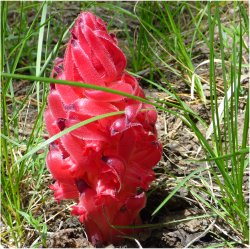
Light dacite pumice displayed at an interpretive
exhibit of the Devasted Area Trail
This rock of light dacite pumice is
displayed next
to the Devastated Area Interpretive Trail in
Lassen Volcanic National Park, California.
The exhibit panel is entitled
“New Rocks, Old Rocks.”
The “new rocks ” include this
light dacite plumice as well as
banded pumice
and
black dacite, which all formed
during eruptions of
Lassen Peak
in 1915. The panel explains:
Light dacite pumice (lava filled with gas bubbles) formed May 22, 1915, when magma neared the surface and expanding gas bubbles fragmented it. The avalanche and mudflow that followed the blast carried it here.
The rapidly exsolving gases, including water and carbon dioxide, and simultaneous cooling of the magma resulted into lightweight, porous rocks. The light dacite varies in composition, having a silica content between 64.5 to 68 wt % [DOI: 10.1093/petroj/40.1.105]: both unbanded and banded dacite pumice formed during the explosive subplinian eruption on the afternoon of May 22 that produced a new Lassen Peak crater and a pyroclastic flow. The latter caused the mudflow by sweeping across the partly snow-covered northeast slope of Lassen Peak.







